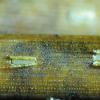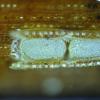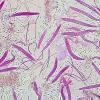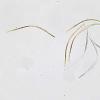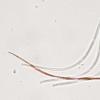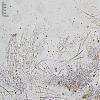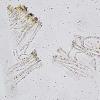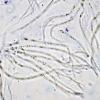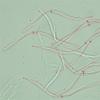
22-12-2025 00:47
Patrice TANCHAUDBonsoir, rĂŠcolte Ă proximitĂŠ du milieu dunaire

21-12-2025 21:32
Pol DebaenstHello, Garden, Burgweg 19, Veurne, BelgiumOn 10/1

21-12-2025 21:40
Isabelle CharissouBonjour, j'aimerais connaitre les rĂŠfĂŠrences de

21-12-2025 21:31
Pol DebaenstHello, Garden, Burgweg 19, Veurne, BelgiumOn 10/1

21-12-2025 21:31
Pol DebaenstHello, Garden, Burgweg 19, Veurne, BelgiumOn 10/1

20-12-2025 23:08
Patrice TANCHAUDBonsoir, rĂŠcolte sur sol sablonneux dans l'arriĂ

21-12-2025 09:32
Hello.A tiny ascomycete found embedded in wood in

20-12-2025 15:47
Mirek GrycHi.These grew on pine wood that was heavily covere
Naemacyclus
Miguel Ăngel Ribes,
26-11-2008 18:50
 TamaĂąo de 1-1,5 x 0,5 mm, sobre acĂculas muertas de Pinus pinaster, levantando la corteza y formando dos barreras paralelas longitudinales. Esporas muy largas, de 157 x 4,4 micras, con 2 septos en la parte central y dos apĂŠndices en forma de punta de lanza en los extremos. Ascas octospĂłricas, esporas dispuestas en espiral, IKI -. ParĂĄfisis muy septadas, estranguladas en los septos de la base y muy ramificadas en las puntas (2-4 ramas). ExcĂpulo compuesto por cadenas de cĂŠlulas globosas-elipsoidales. Lo mĂĄs parecido que encuentro es Naemacyclus minor, con esporas mucho mĂĄs pequeĂąas y sin los apĂŠndices de los extremos.
TamaĂąo de 1-1,5 x 0,5 mm, sobre acĂculas muertas de Pinus pinaster, levantando la corteza y formando dos barreras paralelas longitudinales. Esporas muy largas, de 157 x 4,4 micras, con 2 septos en la parte central y dos apĂŠndices en forma de punta de lanza en los extremos. Ascas octospĂłricas, esporas dispuestas en espiral, IKI -. ParĂĄfisis muy septadas, estranguladas en los septos de la base y muy ramificadas en las puntas (2-4 ramas). ExcĂpulo compuesto por cadenas de cĂŠlulas globosas-elipsoidales. Lo mĂĄs parecido que encuentro es Naemacyclus minor, con esporas mucho mĂĄs pequeĂąas y sin los apĂŠndices de los extremos.Sporal measurement (in water, 1000x)
128.4 [150.7 ; 164.1] 186.4 x 3.4 [4.2 ; 4.6] 5.4
Q = 25.9 [33.8 ; 38.5] 46.4 ; N = 19 ; C = 95%
Me = 157.41 x 4.41 ; Qe = 36.16
Size of 1-1,5 x 0,5 mm, on dead needles of Pinus pinaster, raising the bark and splitting it with two parallel longitudinal scales. Very long spores, 157 x 4,4 microns, with 2 septa in the central part and two appendices with lance-top shape at the ends. Asci eight-spored, spores bundled spirally, IKI-. Paraphysis multiply septate, strangled on the base septa and very branched out in the tops (2-4 branches). Excipulum composed by chains of globular-ellipsoidal cells. The most similar species I have found is Naemacyclus minor, with smaller spores and without the appendices at the ends.
Thank you
Miguel Ăngel Ribes
Miguel Ăngel Ribes,
26-11-2008 19:02
Alain BRISSARD,
26-11-2008 21:04
Re:Naemacyclus
Il s'agit peut ĂŞtre de Naemacyclus niveus (Pers. : Fr.) Sacc. que j'ai observĂŠ sur aiguilles de Pinus maritima. A vĂŠrifier.
Salutations amicales
Alain
Salutations amicales
Alain
Hans-Otto Baral,
26-11-2008 23:13

Re:Naemacyclus
Hi Miguel & Alain
The genus was renamed to Cyclaneusma, while Naemacyclus is used for N. (Lasiostictis) fimbriatus, a completely different species with round stellate apothecia, but also on Pinus needles.
Cyclaneusma minus (= N. minor) was well figured by Piotr Perz here:
http://www.ascofrance.fr/index.php?r=bdd&page=fiche&id=1588
On his drawing you can see that also C. minus has these spore appendages. You write the apos are 0.5 mm wide. Butin says that minor has apos 140-240 Âľm wide while C. niveum 230-340 Âľm. Maybe this is in dry state, I do not know. So considering the rather long spores I also thnk this is C. niveum (= N. niveus)!
Finally, Butin lists for Pinus pinaster only C. niveum.
Zotto
The genus was renamed to Cyclaneusma, while Naemacyclus is used for N. (Lasiostictis) fimbriatus, a completely different species with round stellate apothecia, but also on Pinus needles.
Cyclaneusma minus (= N. minor) was well figured by Piotr Perz here:
http://www.ascofrance.fr/index.php?r=bdd&page=fiche&id=1588
On his drawing you can see that also C. minus has these spore appendages. You write the apos are 0.5 mm wide. Butin says that minor has apos 140-240 Âľm wide while C. niveum 230-340 Âľm. Maybe this is in dry state, I do not know. So considering the rather long spores I also thnk this is C. niveum (= N. niveus)!
Finally, Butin lists for Pinus pinaster only C. niveum.
Zotto
Miguel Ăngel Ribes,
27-11-2008 00:32

Re:Naemacyclus
Thanks Alain, Zotto
I have make a new apos measurement with fresh material: 700-1000 x 400-500 ¾m. My specimen is exactly like Piotr Perz figure (C. minus), except by sporal measurement (half length). In Medardi's keys it appear spores "90-120 x 2-2,5 ¾m" in N. niveum, more near than mine, but he said that it hasn't septa¿¿???
If you consider than the rather long spores is so determinant... then C. niveum is Ok.
Thanks again
Miguel Ăngel Ribes
I have make a new apos measurement with fresh material: 700-1000 x 400-500 ¾m. My specimen is exactly like Piotr Perz figure (C. minus), except by sporal measurement (half length). In Medardi's keys it appear spores "90-120 x 2-2,5 ¾m" in N. niveum, more near than mine, but he said that it hasn't septa¿¿???
If you consider than the rather long spores is so determinant... then C. niveum is Ok.
Thanks again
Miguel Ăngel Ribes
Hans-Otto Baral,
27-11-2008 12:29

Re:Naemacyclus
Septa are easily overlooked, I also did not see them in my old study (HB 1561). I have not often studied this genus, so I do not know how variable spore length is. Spore length also depends on whether you measure the distance between the ends, or the real length along the curved spore, finally differences between living and dead are to be expected.
Butin says minus: 81.8-92.5 x 2.5-3 Âľm
niveum: 91-100 x 2.5-3.5 Âľm
(I do not know how he measured).
How did you measure, distance or along the curvature?
Zotto
Butin says minus: 81.8-92.5 x 2.5-3 Âľm
niveum: 91-100 x 2.5-3.5 Âľm
(I do not know how he measured).
How did you measure, distance or along the curvature?
Zotto
Miguel Ăngel Ribes,
27-11-2008 13:52

Re:Naemacyclus
Hi Zotto
I have measure the spores along the curvature, with the new Piximetre 3.8 version that allows to do different segments to draw the spore shape. Perhaps if I had measured the distance between the ends I had shorter mesarues already 90-120. This night I will make this. I haven't thought about this. And I have only make sporal measures in water, so I suppose these are not dead.
Thank you veru much
Miguel Ăngel Ribes
I have measure the spores along the curvature, with the new Piximetre 3.8 version that allows to do different segments to draw the spore shape. Perhaps if I had measured the distance between the ends I had shorter mesarues already 90-120. This night I will make this. I haven't thought about this. And I have only make sporal measures in water, so I suppose these are not dead.
Thank you veru much
Miguel Ăngel Ribes
Hans-Otto Baral,
27-11-2008 17:49

Re:Naemacyclus
Piximetre is surely a good tool (I never used it but i saw it). Yet it does not allow to messure the length of helicoid spores?
Zotto
Zotto

